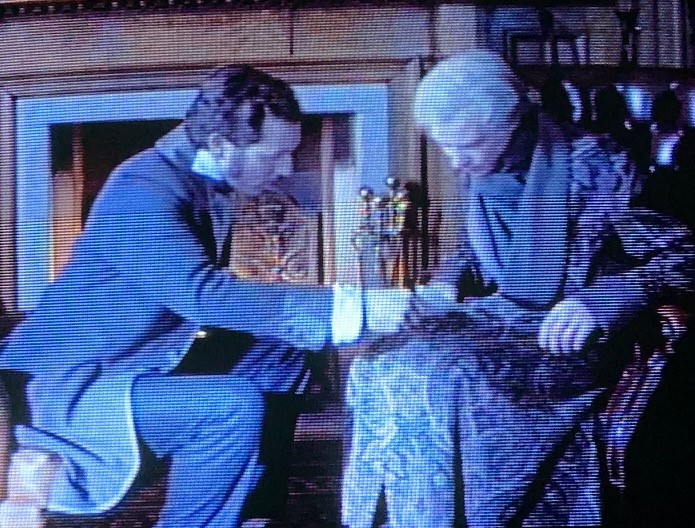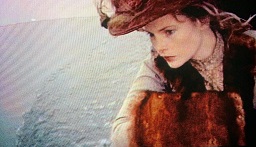|
home | what's new | other sites | contact | about |
||||||
|
Word Gems exploring self-realization, sacred personhood, and full humanity
Einstein
return to "Einstein" main-page
a is for apple, b is for boy, and c is for celeritas Class dismissed. The “c” in E=mc2 stands for the Latin word “celeritas,” meaning “swiftness.” (This root is found in the English word “acceleration.”) "C" became associated with the speed of light, of course, because it's so incredibly fast. So fast, that, for a long time, it was thought that light travels instantaneously everywhere; or, if it did have a finite speed, it was too fast to measure. But all this was proved incorrect. Michael Faraday at the Royal Society While the speed of light had been roughly determined by 1846, no one knew what light actually was. In that year, Michael Faraday – by then, Professor Faraday at the Royal Society – lectured that electricity and magnetism were aspects of the same underlying phenomenon; further, light is an expression of this electro-magnetic field of energy. This was a new and radical idea, and not well received. Despite Faraday’s monumental contributions to science, skeptics derided his latest finding. Faraday’s problem was that he lacked the math skills to prove his theory. you can't fight the science skeptics without math Editor's note: On this field of battle, the maths front, the Darwinian concept of randomness and chance falls to pieces. See on the "Evolution" page. However, by the early 1860s, Faraday found an ally in James Clark Maxwell. This Scottish scientist did possess the mathematical ability to offer substance to Faraday’s assertions. Maxwell’s equations have become famous as they summarize the classical properties of the electromagnetic field. Before Faraday’s death in 1867, Maxwell travelled to London to meet with his very aged and frail friend. This meeting is depicted in the documentary, “Einstein’s Big Idea” (2005).
Maxwell shows Faraday a recently-published paper which would put the elder scientist’s ideas on the map: Maxwell: “When electricity flows along a wire, it creates a little bit of magnetism, and when that magnetic charge moves, it creates a little piece of electricity. Electricity and magnetism are interwoven, like a never-ending braid. It’s always pulsing forward. Faraday: “It’s wonderful.” Maxwell: “Michael, there’s something very crucial in the maths. This electricity producing magnetism, and magnetism producing electricity, can only happen at a very particular speed. The equations are very clear about it. They come up with just one number: [186,000 miles per second]." Faraday: “I’m not sure I …” Maxwell: “It’s the speed of light! This means you were right all along, Michael! Light’s an electromagnetic wave!” Maxwell had proven Faraday correct. Light is an electromagnetic wave. Light is an expression, a vibrating form, of an underlying substrata of reality, a marriage between electricity and magnetism. Light may be a wave, but does this wave operate like all the other waves we've known in the world? This question, and many others concerning light, fascinated the young Einstein. From his letters and papers, we know that he was asking questions about light even at age 16. One day, Einstein and his wife were walking in the park, along a river. A boat sailed by. On board was a young woman, staring fixedly, almost hypnotically, at the waves splashing at the side of the boat.
Einstein, as depicted in the documentary, said, to the effect, “Look at the woman in the boat. She’s staring blankly at the waves by the boat. It’s as if the waves have no movement for her. She’s traveling, of course, at the same speed as the boat. For her, the waves are virtually motionless. Now, we, on the shore, see the waves splashing as the boat powers by. We are stationary relative to the boat and the waves, and the boat and the waves, for us, are moving, but for her, none of it’s apparently moving, because she herself is moving at the same speed as the boat and the waves.” Then Einstein asked the question: “What would happen if we could catch up to a beam of light? What would we see?” Einstein’s wife responds: “Common sense tells us that, if we were going as fast as the beam of light, it would just be sitting there, as the water waves seem to be not moving for the lady in the boat.” Then Einstein says: “Imagine that I have a mirror in my hand. I’m looking at my face in the mirror. Now, imagine that I’m doing this while travelling at the speed of light. Would I still be able to see my reflection in the mirror? Or maybe I would ‘disappear’ in the mirror because the reflected light could not catch up to me!”
Images in mirrors would disappear – but only if a wave of light operates the same way as do all other waves we’ve known in the world. And this is where the fun starts. Maxwell’s equations predicted that you can never catch up to a beam of light! Even if you were speeding at 186,000 miles per second, you would still see that light beam moving away from you at 186,000 miles per second! Albert Einstein was the first to understand the utterly counter-intuitive relationship among the concepts, space, time, and the speed of light. His deep insight into the architectonic underpinnings of reality still rocks and shocks the world 100 years later.
|
||||||
|
|




.jpg)
.jpg)